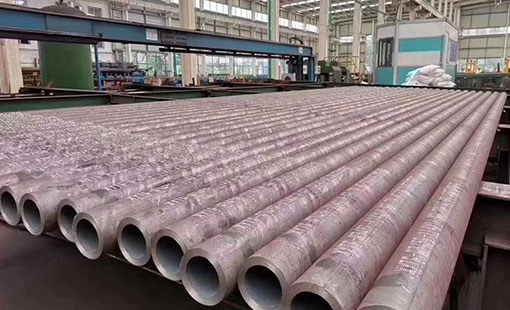Preheating before welding is a technological measure to properly heat the steel pipe locally and as a whole before welding. Its purpose is to reduce the cooling rate of welded joints, avoid hardened structures and reduce welding stress and deformation. It is an effective method to prevent welding cracks in steel pipes (such as seamless pipes and welded pipes).
The methods of preheating before welding mainly include flame heating, furnace heating and far infrared heating. When preheating, the surface contact thermometer should be used to measure the temperature within the range of 30-50mm on both sides of the area to be welded.

The purpose of preheating before welding is to:
(1) Preheating can reduce the cooling rate of the welded joint, which is conducive to the escape of diffused hydrogen in the weld metal and can avoid hydrogen-induced cracks.
(2) Preheating can prolong the cooling time in the temperature range of 800~5001 in the heat-affected zone. During the cooling process of the welded joint from the high temperature just solidified to room temperature, the metallographic structure will change, and the austenite will start to transform from 8001. When the cooling is slow, it transforms into ferrite and pearlite or troostite, thus avoiding the martensitic hardened structure and improving the crack resistance of welded joints, thereby avoiding welding cracks.
(3) Preheating can reduce welding stress. Preheating (local preheating or overall preheating) can reduce the temperature difference between the welding zone and the overall temperature of the weldment (also called temperature gradient). The smaller the temperature difference, the smaller the temperature non-uniformity between the welding zone and the weldment structure. As a result, on the one hand, the welding stress is reduced, and on the other hand, the welding strain rate is reduced, which is beneficial to avoid welding cracks.
(4) Preheating can reduce the degree of restraint of welded structures, especially for reducing the degree of restraint of corner joints. As the preheating temperature increases, the crack rate decreases.
The methods of preheating before welding mainly include flame heating, furnace heating and far infrared heating. When preheating, the surface contact thermometer should be used to measure the temperature within the range of 30-50mm on both sides of the area to be welded.

The purpose of preheating before welding is to:
(1) Preheating can reduce the cooling rate of the welded joint, which is conducive to the escape of diffused hydrogen in the weld metal and can avoid hydrogen-induced cracks.
(2) Preheating can prolong the cooling time in the temperature range of 800~5001 in the heat-affected zone. During the cooling process of the welded joint from the high temperature just solidified to room temperature, the metallographic structure will change, and the austenite will start to transform from 8001. When the cooling is slow, it transforms into ferrite and pearlite or troostite, thus avoiding the martensitic hardened structure and improving the crack resistance of welded joints, thereby avoiding welding cracks.
(3) Preheating can reduce welding stress. Preheating (local preheating or overall preheating) can reduce the temperature difference between the welding zone and the overall temperature of the weldment (also called temperature gradient). The smaller the temperature difference, the smaller the temperature non-uniformity between the welding zone and the weldment structure. As a result, on the one hand, the welding stress is reduced, and on the other hand, the welding strain rate is reduced, which is beneficial to avoid welding cracks.
(4) Preheating can reduce the degree of restraint of welded structures, especially for reducing the degree of restraint of corner joints. As the preheating temperature increases, the crack rate decreases.









